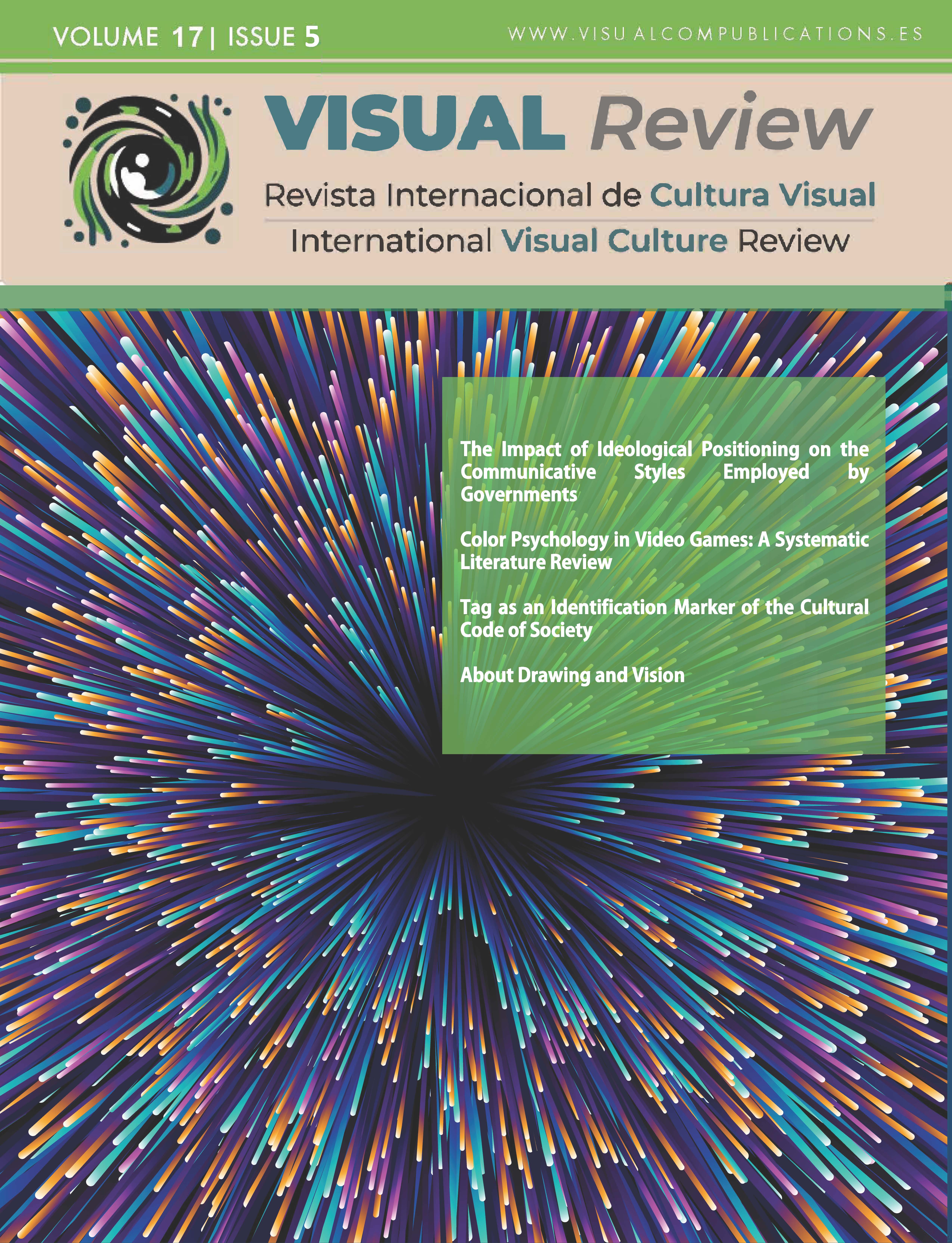Emotional Response to Social Media Communication of Phygital Brand Experiences
Experimental Neuromarketing Analysis
DOI:
https://doi.org/10.62161/revvisual.v17.5858Keywords:
Neuromarketing, Phygital, Brand experience, Social Media, EmotionsAbstract
Generation Z reacts positively to social media communication about a phygital brand experience if they have an affinity with the brand. The spontaneous emotions of 28 students were analyzed using an experimental methodology with the neuromarketing software FaceReader 9 by Noldus. The results confirm that brand affinity predisposes individuals to emotions such as surprise and joy when invited to a phygital (physical and digital) brand experience, but this does not always predict their intention to attend. The study contributes to understanding consumer behavior toward phygital experiences, providing recommendations for strategy implementation, brand experience design, and communication.
Downloads
Global Statistics ℹ️
|
193
Views
|
143
Downloads
|
|
336
Total
|
|
References
Atasoy, O., & Morewedge, C. K. (2018). Digital Goods Are Valued Less Than Physical Goods. Journal of Consumer Research, 44(6), 1343-1357. https://doi.org/10.1093/JCR/UCX102 DOI: https://doi.org/10.1093/jcr/ucx102
Batat, W. (2023). Experiential research as a methodological framework for studying consumer behaviors in phygital settings. Qualitative Market Research, 26(3), 269-277. https://doi.org/10.1108/QMR-12-2022-0178 DOI: https://doi.org/10.1108/QMR-12-2022-0178
Batat, W., & Hammedi, W. (2023). The extended reality technology (ERT) framework for designing customer and service experiences in phygital settings: a service research agenda. Journal of Service Management, 34(1), 10-33. https://doi.org/10.1108/JOSM-08-2022-0289 DOI: https://doi.org/10.1108/JOSM-08-2022-0289
Batra, R., Ahuvia, A., & Bagozzi, R. P. (2012). Brand Love. Journal of Marketing, 76(2), 1-16. https://doi.org/10.1509/jm.09.0339 DOI: https://doi.org/10.1509/jm.09.0339
Belghiti, S., Ochs, A., Lemoine, J. F., & Badot, O. (2018). The Phygital Shopping Experience: An Attempt at Conceptualization and Empirical Investigation. En Developments in Marketing Science: Proceedings of the Academy of Marketing Science (pp. 61-74). Springer Nature. https://doi.org/10.1007/978-3-319-68750-6_18 DOI: https://doi.org/10.1007/978-3-319-68750-6_18
Brakus, J. J., Schmitt, B. H., & Zarantonello, L. (2009). Brand Experience: What is It? How is it Measured? Does it Affect Loyalty?: https://doi.org/10.1509/jmkg.73.3.052, 73(3), 52-68. https://doi.org/10.1509/JMKG.73.3.052 DOI: https://doi.org/10.1509/jmkg.73.3.052
Burke, R. R. (2002). Technology and the Customer Interface: What Consumers Want in the Physical and Virtual Store. Journal of the Academy of Marketing Science, 30(4), 411-432. https://doi.org/10.1177/009207002236914 DOI: https://doi.org/10.1177/009207002236914
Chevtchouk, Y., Veloutsou, C., & Paton, R. A. (2021). The experience – economy revisited: an interdisciplinary perspective and research agenda. Journal of Product and Brand Management, 30(8), 1288-1324. https://doi.org/10.1108/JPBM-06-2019-2406 DOI: https://doi.org/10.1108/JPBM-06-2019-2406
Dolot, A. (2018). The characteristics of Generation Z. E-Mentor, 2(74), 44-50. https://doi.org/10.15219/em74.1351 DOI: https://doi.org/10.15219/em74.1351
Fondevila-Gascón, J. F., Vidal-Portés, E., Muñoz-Sánchez, O., & Polo-López, M. (2021). Interactive advertising on HbbTV: An experimental analysis of emotions. Sustainability (Switzerland), 13(14), 1-13. https://doi.org/10.3390/su13147794 DOI: https://doi.org/10.3390/su13147794
Fournier, S. (1998). Consumers and Their Brands Developing. Journal of Consumer Research, 24(4), 343-353. DOI: https://doi.org/10.1086/209515
Pine, B. J., & Gilmore, J. H. (1998). Welcome to the experience economy. Harvard business review, 76(4), 97-105.
Johnson, M., & Barlow, R. (2021). Defining the phygital marketing advantage. Journal of Theoretical and Applied Electronic Commerce Research, 16(6), 2365-2385. https://doi.org/10.3390/JTAER16060130 DOI: https://doi.org/10.3390/jtaer16060130
Krtolica-Lukic, A., Polo-López, M., & Ramírez-Pagès, A. (2024). Phygital Brand Experience: Merging Physical and Digital Formats to Enhance Customer Engagement (pp. 345-360). https://doi.org/10.1007/978-981-97-1552-7_23 DOI: https://doi.org/10.1007/978-981-97-1552-7_23
López Vidales, N., & Rubio, L. G. (2021). Trends in youth behaviour change in the face of the media: Millennials vs Generation Z. Estudios Sobre el Mensaje Periodistico, 27(2), 543-552. https://doi.org/10.5209/ESMP.70170 DOI: https://doi.org/10.5209/esmp.70170
Moravcikova, D., & Kliestikova, J. (2017). Brand Building with Using Phygital Marketing Communication. Journal of Economics, Business and Management, 5(3), 148–153. https://doi.org/10.18178/joebm.2017.5.3.503 DOI: https://doi.org/10.18178/joebm.2017.5.3.503
Morgan, M. (2006). Making space for experiences. Journal of Retail & Leisure Property, 5(4), 305-313. https://doi.org/10.1057/palgrave.rlp.5100034 DOI: https://doi.org/10.1057/palgrave.rlp.5100034
Oishi, H., Nakazawa, K., Takahashi, T., Kyutoku, Y., & Dan, I. (2023). Visualizing the IKEA effect: experiential consumption assessed with fNIRS-based neuroimaging. Frontiers in Neuroergonomics, 4. https://doi.org/10.3389/fnrgo.2023.1129582 DOI: https://doi.org/10.3389/fnrgo.2023.1129582
Schroer. (2008). Defining, Managing, and Marketing to Generations X, Y, and Z. The Portal, XL(March/April), 9. www.HHGFAA.org.
Skiendziel, T., Rösch, A. G., & Schultheiss, O. C. (2019). Assessing the convergent validity between the automated emotion recognition software Noldus FaceReader 7 and Facial Action Coding System Scoring. PLoS ONE, 14(10), 1-18. https://doi.org/10.1371/journal.pone.0223905 DOI: https://doi.org/10.1371/journal.pone.0223905
Sullivan, G. M., & Artino, A. R. (2013). Analyzing and Interpreting Data From Likert-Type Scales. Journal of Graduate Medical Education, 5(4), 541-542. https://doi.org/10.4300/JGME-5-4-18 DOI: https://doi.org/10.4300/JGME-5-4-18
Zarantonello, L., & Schmitt, B. H. (2023). Experiential AR/VR: a consumer and service framework and research agenda. Journal of Service Management, 34(1), 34–55. DOI: https://doi.org/10.1108/JOSM-12-2021-0479
Yu, C. Y., & Ko, C. H. (2017). Applying FaceReader to Recognize Consumer Emotions in Graphic Styles. Procedia CIRP, 60, 104-109. https://doi.org/10.1016/j.procir.2017.01.014 DOI: https://doi.org/10.1016/j.procir.2017.01.014
Wong, A. (2023). Understanding Consumer Brand Love, Brand Commitment, and Brand Loyalty. Journal of Relationship Marketing, 22(2), 87–114. DOI: https://doi.org/10.1080/15332667.2023.2173937
Downloads
Published
How to Cite
Issue
Section
License
Copyright (c) 2025 Authors retain copyright and transfer to the journal the right of first publication and publishing rights

This work is licensed under a Creative Commons Attribution-NoDerivatives 4.0 International License.
Those authors who publish in this journal accept the following terms:
-
Authors retain copyright.
-
Authors transfer to the journal the right of first publication. The journal also owns the publishing rights.
-
All published contents are governed by an Attribution-NoDerivatives 4.0 International License.
Access the informative version and legal text of the license. By virtue of this, third parties are allowed to use what is published as long as they mention the authorship of the work and the first publication in this journal. If you transform the material, you may not distribute the modified work. -
Authors may make other independent and additional contractual arrangements for non-exclusive distribution of the version of the article published in this journal (e.g., inclusion in an institutional repository or publication in a book) as long as they clearly indicate that the work was first published in this journal.
- Authors are allowed and recommended to publish their work on the Internet (for example on institutional and personal websites), following the publication of, and referencing the journal, as this could lead to constructive exchanges and a more extensive and quick circulation of published works (see The Effect of Open Access).













